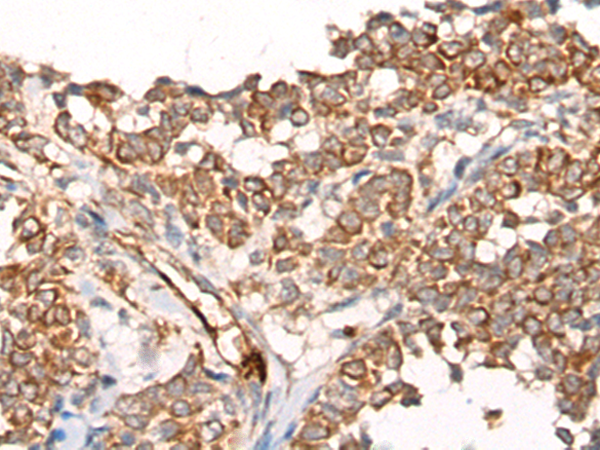CA5B Polyclonal Antibody
For reference only. Please follow the manual included in your kit for instructions.
Catalog Number
RD217756A
Product Name
CA5B Polyclonal Antibody
Catalog Number
RD217756A
Clonality
Polyclonal
Purification Method
Antigen affinity purification
Isotype
IgG
Host
Rabbit
Background
Carbonic anhydrases (CAs) are a large family of zinc metalloenzymes that catalyze the reversible hydration of carbon dioxide. They participate in a variety of biological processes, including respiration, calcification, acid-base balance, bone resorption, and the formation of aqueous humor, cerebrospinal fluid, saliva, and gastric acid. They show extensive diversity in tissue distribution and in their subcellular localization. CA VB is localized in the mitochondria and shows the highest sequence similarity to the other mitochondrial CA, CA VA. It has a wider tissue distribution than CA VA, which is restricted to the liver. The differences in tissue distribution suggest that the two mitochondrial carbonic anhydrases evolved to assume different physiologic roles.CA5B (Carbonic Anhydrase 5B) is a Protein Coding gene. Diseases associated with CA5B include Heart Conduction Disease and Heart Septal Defect. Among its related pathways are Nitrogen metabolism and Metabolism. GO annotations related to this gene include carbonate dehydratase activity. An important paralog of this gene is CA5A.
Immunogen Information
Immunogen
Synthetic peptide of human CA5B
Swissprot
Q9Y2D0
Synonyms
CA VBCarbonate dehydratase VBCarbonic anhydrase 5BmitochondrialCarbonic anhydrase VBCarbonic anhydrase VBmitochondrial
Gene Accession
NP009151
Applications
Reactivity
Human
Tested Applications
IHC,ELISA
Conjugation
Unconjugated
Dilution
IHC 1:40-1:200, ELISA 1:5000-1:10000
Concentration
0.9 mg/mL
Storage Buffer
PBS with 0.05% NaN3 and 40% Glycerol, pH7.4
Storage Instructions
Store at -20°C. Avoid freeze / thaw cycles.
